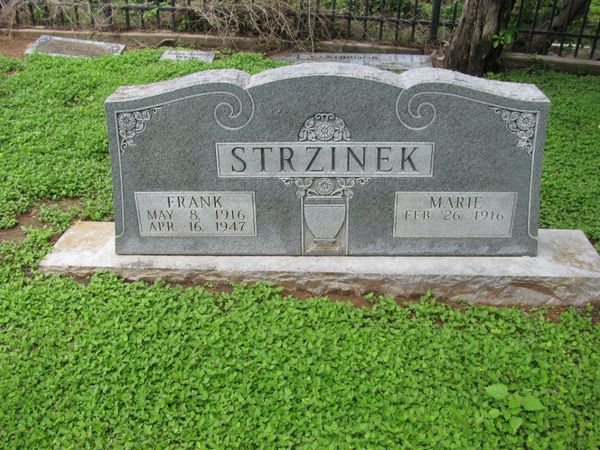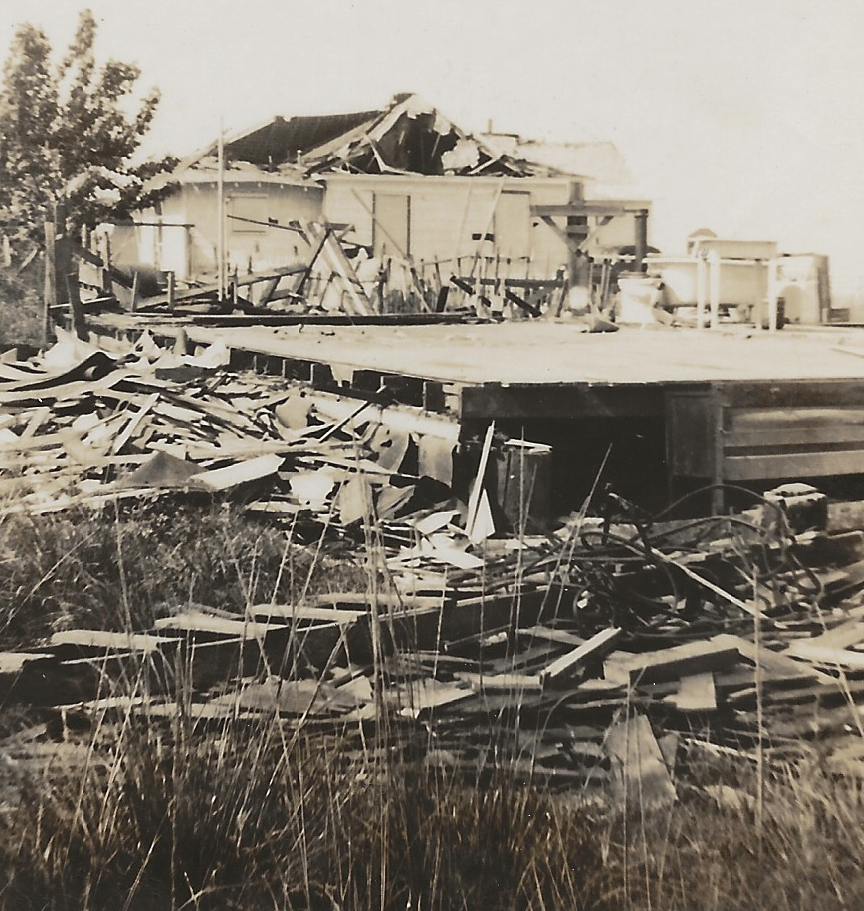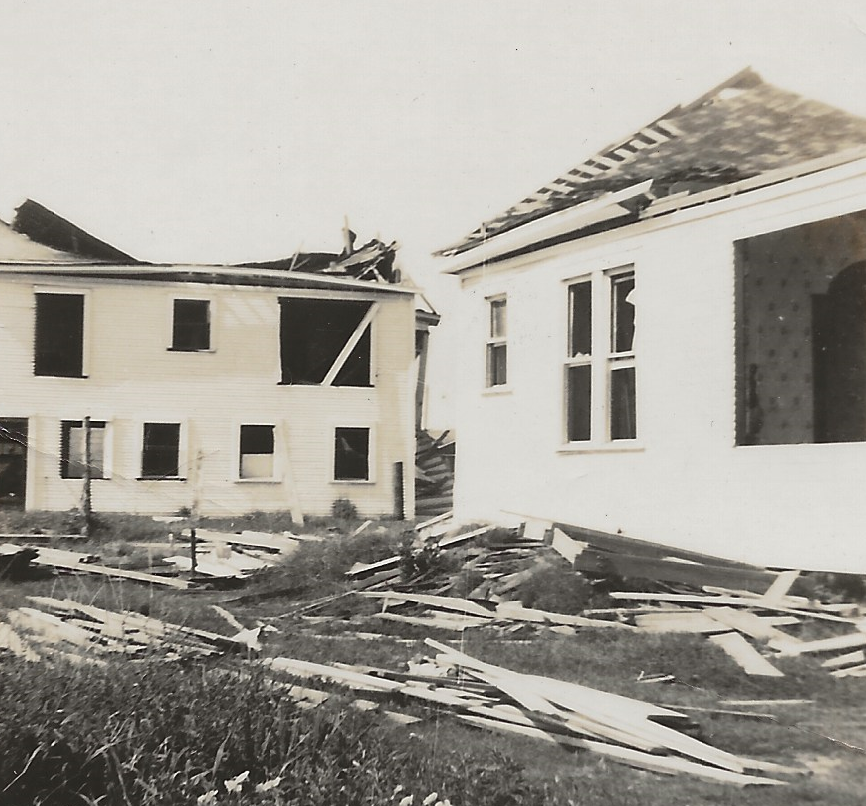![]()
By Tracy Gupton
The Texas City disaster on April 16, 1947, killed over 580 people including Frank Strzinek, a Purple Heart recipient during World War II. He was interred at Old Columbia Cemetery in West Columbia, Texas, after being one of the hundreds of casualties from the explosion of the SS Grandcamp French-registered vessel that was docked at the Port of Texas City at Galveston Bay. Frank was a Rosenberg volunteer fireman who lost his life when a mid-morning fire started on board the Grandcamp detonated her cargo of approximately 2,300 tons of ammonium nitrate while efforts were being made to extinguish the flames. The explosion started a chain reaction of additional fires and explosions in other ships and nearby oil-storage facilities. The event, still to this day the deadliest industrial accident in American history, resulted in the deaths of not only Frank Strzinek and over 580 other people, but also killed all but one member of the Texas City volunteer fire department. The blasts leveled nearly 1,000 buildings on land and windows shattered on nearly half the structures in Galveston over 10 miles away. More than 5,000 people were injured that day and the explosion was reported to have been heard as far as 150 miles away. The SS Grandcamp already had fuel oil and ammunition in the cargo hold and some 2,300 tons of the ammonium nitrate fertilizer had already been loaded on the ship when smoke was noticed by workers. Sightseers began to gather at a distance to watch the fire fighting efforts aboard the ship when the huge explosion occurred, killing most of them. The explosions totally destroyed the nearby Monsanto Chemical Company plant and resulted in ignition of refineries and chemical tanks on the waterfront. The nearby Union Carbide plant was also heavily damaged. Frank Strzinek was born on May 8th, 107 years ago in 1916, and was a month shy of celebrating his 31st birthday when he lost his life in the Texas City disaster. He married Marie Huebner on December 12, 1936, when they were both 20 years old. They had no children. Marie Strzinek, who was the daughter of Willie and Lena Schaefer Huebner, married Ray Stern on December 22, 1952. Marie and Ray, who had one son, Ray Stern Jr., are buried in Rosenberg.
Ray Stern Jr. said, “Frank was a fireman in Rosenberg who was watching on a dock when it exploded. He was also a Purple Heart recipient from WWII. After Mom died, I found a chest with his war diary, photos and service medals that I was able to return to his relatives.”
Ray Stern Jr.’s mother was also in Texas City the day of the explosion in 1947. “My Mom was shopping, not at the dockside,” Ray Jr. recalls. “She never, ever talked about it but my uncles and aunts said she walked through destruction and puddles of blood in the street that day. My Uncle Kirk Fortenberry (husband of Esther Huebner) went to Texas City to find and retrieve his body. Aunt Mildred Sefcik and my older half-sisters believed she suffered from what we would now call Post Traumatic Stress for the rest of her life from that day. I believe it.”
West Columbia Mayor Laurie Beal Kincannon said her father, Harold Beal, went to Texas City after the huge explosion with other West Columbia volunteer firemen. “My Dad, along with the WCVFD, answered the call. He picked up relics which are in the display case at the fire department” in West Columbia.
Former Columbia Historical Museum Board of Directors President Nita Kennemer’s memory of that horrible day 76 years ago said the Texas City blast, although occurring so far away, reached her hometown. “I have flashbacks to my childhood. I was only five years old but definitely remember hearing the explosion in West Columbia. It was a terrible disaster.”
The Chesney sisters, Donna Ruth and Tissie, echoed Nita Dearing Kennemer’s memories of that mid-April day in 1947. Patricia “Tissie” Chesney Schwebel said she “remembers the windows rattling in West Columbia.” Her older sister, Donna Ruth Chesney Loggins, said, “I was in junior high and all the windows rattled in the old two-story school” in West Columbia. Both Donna and Tissie are former Columbia Historical Museum board members.
Lugene Fink Sims, who grew up in West Columbia, said, “My grandfather, James Dodson, also went to Texas City that day. He ran ambulance service. He helped Mr. Waite that had the funeral home in West Columbia at the time.”
George Munson said, “The man I was named after, George Kennedy, was checking on cattle on a leased ranch about 10 miles away (from the explosion site in Texas City). He said it almost knocked him off his horse. It broke an upstairs window in our old house south of the Brazoria County fairgrounds.”
“A sad fact,” Munson realized. “The deadliest natural disaster and the deadliest industrial disaster in U.S. history both occurred in Galveston County.” The hurricane that swept Galveston Island early in September, 1900, remains the standard against which the ferocity and destructiveness of all others are measured. Two-thirds of Galveston’s buildings were washed away and more than 6,000 people were killed. “And I hope those records are never broken,” Munson said.
“My Dad was there for a long while after the explosion was over,” John Moore said. “He helped clean up the debris and was involved in the rebuild of the Monsanto plant. He was a crane operator at the time.”
Moore said his father told him, like a soldier returning home from the ghastly sights and sounds of military battle, “It was horrible, no more.”
Ray Stern Jr. said his father, Ray Stern Sr., “could not speak about what he saw.”




Photo by Tracy Gupton
The headstone marking the grave of Texas City Disaster victim Frank Strzinek, a Purple Heart recipient for the bravery he displayed in battle during World War II, was photographed at Columbia Cemetery in West Columbia.

Contributed Photos
The aftermath of the April 16, 1947, devastating explosion aboard a ship docked at the Galveston Bay Harbor in Texas City, Texas. An anonymous donor dropped off several photographs taken in Texas City the day of and possible the day after this tragic event occurred in neighboring Galveston County. The photo above and those below were included in the packet of old pictures.


Devastating!!! Interesting point that “the deadliest natural disaster and the deadliest industrial disaster in the US both occurred in Galveston County.”